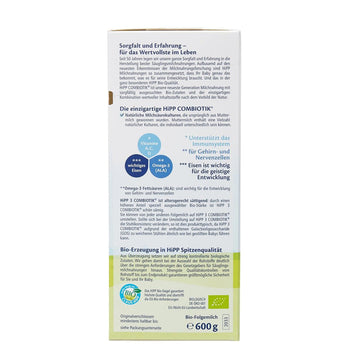When it comes to infant nutrition, parents want nothing but the best for their babies. Infant formula is a critical component for many families, and understanding the differences between European infant formula and those regulated by the U.S. Food and Drug Administration (FDA) can help parents make informed choices. This blog post delves into the key differences between EU and FDA formula standards, focusing on ingredients, nutritional requirements, safety protocols, and labeling.
Regulatory Bodies: EFSA vs. FDA
European Food Safety Authority (EFSA)
In Europe, infant formulas are regulated by the European Food Safety Authority (EFSA). The EFSA sets stringent guidelines to ensure that infant formulas meet high safety and nutritional standards. These regulations are enforced across all member states of the European Union (EU), ensuring consistency in product quality.
U.S. Food and Drug Administration (FDA)
In the United States, infant formulas are regulated by the FDA. The FDA's guidelines focus on ensuring that infant formulas provide adequate nutrition for infants who rely solely on these products for their dietary needs. While both regulatory bodies aim to protect infants' health, there are notable differences in their approaches.
Ingredient Standards
EU Ingredient Regulations
European infant formula standards emphasize natural ingredients and limit synthetic additives. For instance:
- Probiotics and Prebiotics: Many European formulas include probiotics like Bifidobacterium lactis to promote gut health.
- Organic Ingredients: Organic certification is more common in Europe, with strict guidelines on pesticide use.
- No GMOs: The EU has stringent regulations against genetically modified organisms (GMOs) in food products.
FDA Ingredient Regulations
The FDA also has strict ingredient guidelines but allows more flexibility in certain areas:
- Iron Fortification: The FDA mandates higher levels of iron fortification compared to EU standards.
- Synthetic Additives: Certain synthetic nutrients like DHA (Docosahexaenoic Acid) can be added to U.S. formulas.
- GMOs: There are no specific restrictions against GMOs in U.S.-regulated infant formulas.
Nutritional Requirements
Macronutrients
Both regulatory bodies require that infant formulas contain essential macronutrients such as proteins, fats, and carbohydrates. However, there are differences in how these nutrients are sourced and processed.
EU Standards
European regulations often prefer milk-based proteins from organic sources. They also emphasize lactose as a primary carbohydrate source due to its natural occurrence in breast milk.
FDA Standards
The FDA allows a broader range of protein sources including soy-based proteins for infants with allergies or intolerances. Corn syrup solids may also be used as a carbohydrate source.
Micronutrients
Micronutrient requirements such as vitamins and minerals also vary between the two regulatory bodies:
EU Standards
The EFSA mandates specific ratios of vitamins like Vitamin D and minerals such as calcium to mimic breast milk closely.
FDA Standards
The FDA has its own set of requirements but generally allows higher levels of certain nutrients like iron to address potential deficiencies common in American diets.
Safety Protocols
Both EFSA and FDA have rigorous safety protocols but differ slightly in their approaches:
EFSA Safety Measures
European manufacturers must undergo extensive testing before bringing a product to market. This includes clinical trials focused on both short-term efficacy and long-term safety.
FDA Safety Measures
The FDA requires pre-market notifications but does not mandate clinical trials unless there is a new ingredient or significant change in formulation. Post-market surveillance is also an essential part of ensuring ongoing safety.
Labeling Requirements
Labeling is another area where differences emerge:
EU Labeling Rules
European labels must clearly state whether a product contains allergens like soy or lactose. They also need to indicate if the formula is suitable for specific dietary needs such as lactose intolerance or cow’s milk protein allergy.
U.S Labeling Rules
The FDA requires labels to list all ingredients but allows more flexibility regarding allergen warnings compared to European standards. Nutritional information must be prominently displayed along with preparation instructions.
Conclusion
Understanding the differences between European infant formula standards set by EFSA and those regulated by the FDA can help parents make better-informed decisions about what they feed their babies. While both regulatory bodies aim to ensure safe, nutritious options for infants, they have different approaches regarding ingredients, nutritional content, safety protocols, and labeling requirements.
By being aware of these distinctions, parents can choose products that align with their values—whether it's prioritizing organic ingredients found commonly in European formulas or opting for specialized formulations available under FDA regulations.


























